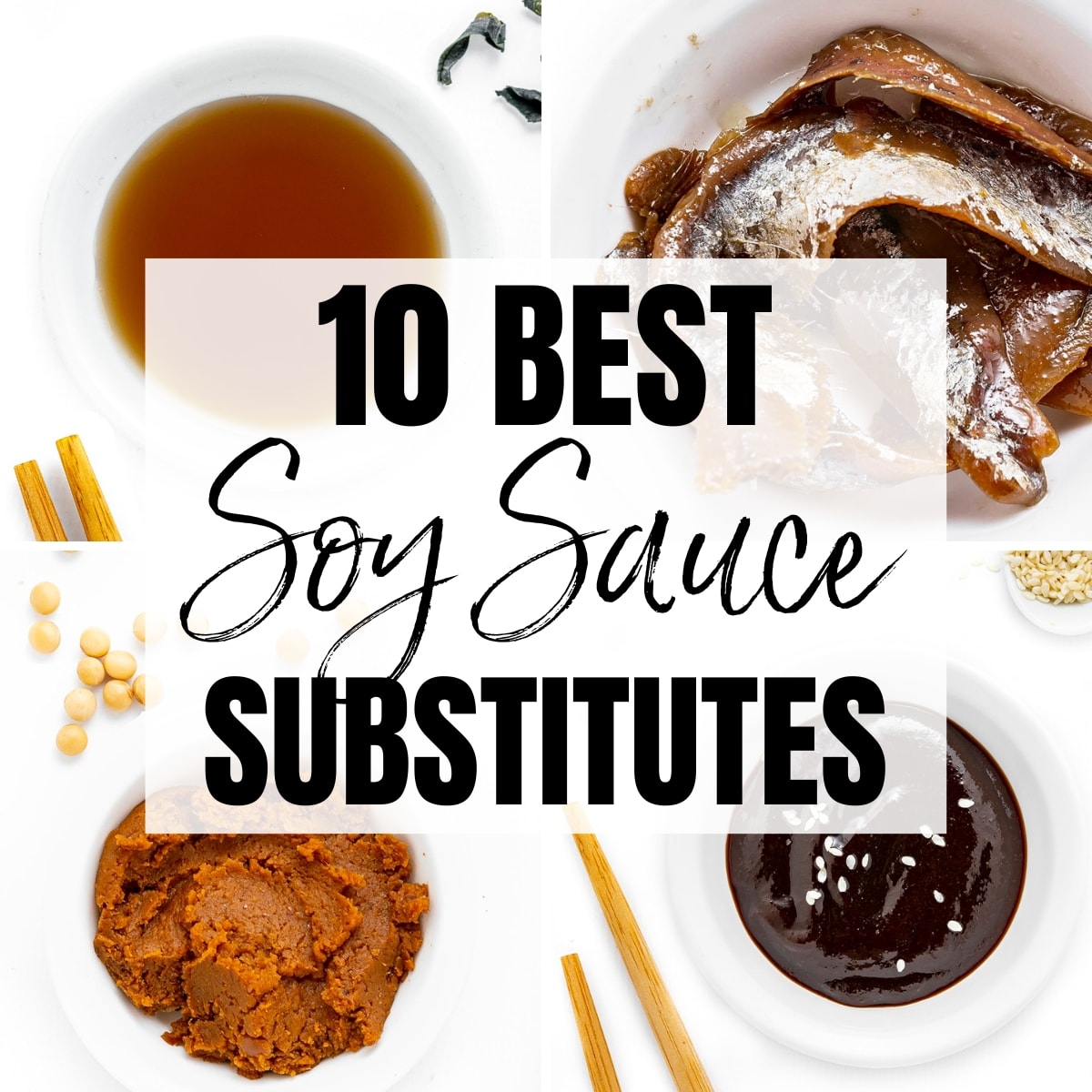Embark on a culinary adventure as we delve into the fascinating world of soy-free sauces. The rising demand for allergen-friendly options has spurred innovation in the food industry, leading to a vibrant marketplace of delicious and nutritious alternatives to traditional soy sauce. From the subtle nuances of coconut aminos to the earthy depth of mushroom-based sauces, we’ll explore the diverse landscape of soy-free condiments, examining their unique flavor profiles, nutritional benefits, and the techniques used to create them.
This exploration will unveil the secrets behind crafting compelling soy-free sauces, guiding you through detailed recipes and insightful comparisons. We’ll investigate the sensory experiences these alternatives offer, considering both the expert opinions and consumer preferences. Prepare to expand your culinary horizons and discover the exciting possibilities of reinventing a classic condiment.
Recipe Development
Crafting a compelling soy-free sauce requires a nuanced understanding of flavor profiles and ingredient interactions. The goal is to replicate the savory depth and umami richness of soy sauce, while delivering a unique taste experience. This involves careful selection of core ingredients and precise techniques to balance sweetness, saltiness, and umami. Coconut aminos serve as the foundational element, providing a naturally salty and subtly sweet base.
Coconut Aminos as a Foundation
Coconut aminos, derived from the sap of coconut palm trees, form the backbone of our soy-free sauce. Their inherent saltiness and slight sweetness provide a suitable starting point, mimicking the base flavor profile of soy sauce. The light brown color also contributes to a visually appealing resemblance. The key lies in building upon this foundation with complementary ingredients to enhance the umami notes and achieve the desired complexity. Unlike soy sauce, coconut aminos possess a milder, less pungent flavor, requiring careful layering of additional ingredients to reach the desired intensity.
Enhancing Umami and Savory Notes
Several ingredients play crucial roles in building the umami profile and achieving a soy sauce-like depth. Dried shiitake mushrooms, rich in glutamates, contribute significantly to the savory character. Their deep, earthy flavor adds complexity and layers to the sauce. Similarly, kelp or other types of seaweed introduce a subtle ocean-like salinity and a distinct umami boost. The addition of tamari (a naturally gluten-free soy sauce alternative) in limited quantities can add a familiar soy-sauce-like taste without dominating the flavor profile. The careful balance is essential; too much tamari can overpower the coconut aminos and other ingredients.
Balancing Sweetness, Saltiness, and Umami
Achieving the right balance of sweetness, saltiness, and umami is crucial for a successful soy-free sauce. The inherent sweetness in coconut aminos provides a good starting point. However, a touch of maple syrup or another mild sweetener can be added to round out the flavor and create a pleasant balance with the saltiness. Salt is crucial for preserving the sauce and adding to the savory taste, but must be added gradually, tasted and adjusted throughout the process to prevent over-salting. The umami notes from the mushrooms and seaweed will contribute significantly to the overall flavor, and the amount added will impact the intensity of this taste. Careful tasting at each stage is crucial for achieving the ideal balance.
Step-by-Step Soy-Free Sauce Recipe
Step 1: Prepare the Mushrooms. Rehydrate 1/4 cup dried shiitake mushrooms in 1 cup hot water for at least 30 minutes. Reserve the soaking liquid.
Step 2: Sauté the Mushrooms. Remove the mushrooms from the soaking liquid and finely chop them. Sauté in a small pan with 1 tablespoon of olive oil until softened, about 5 minutes.
Step 3: Combine Ingredients. In a small saucepan, combine 1 cup coconut aminos, the sautéed mushrooms, 1 tablespoon of reserved mushroom soaking liquid, 1 teaspoon tamari, 1/2 teaspoon kelp granules, and 1/2 teaspoon maple syrup.
Step 4: Simmer and Reduce. Bring the mixture to a simmer over medium heat. Reduce heat to low and simmer for 15-20 minutes, stirring occasionally, until slightly thickened.
Step 5: Adjust Seasoning. Taste and adjust the seasoning as needed. Add more salt, maple syrup, or tamari to achieve the desired balance of sweetness, saltiness, and umami.
Step 6: Cool and Store. Remove from heat and let the sauce cool completely before storing in an airtight container in the refrigerator. The flavor will deepen over time.
Nutritional and Health Aspects of Soy-Free Alternatives

Soy sauce, a culinary staple for centuries, presents a significant challenge for individuals with soy allergies or intolerances. Fortunately, a range of delicious and nutritious soy-free alternatives exist, each offering a unique flavor profile and nutritional composition. Understanding the nutritional differences between these options is crucial for making informed dietary choices.
Allergen Profiles of Soy Sauce and Soy-Free Alternatives
Soy sauce, derived from fermented soybeans, wheat, and salt, contains several potential allergens, primarily soy and wheat. Individuals with soy allergies must strictly avoid soy sauce, while those with wheat allergies need to check labels for wheat-containing soy sauces. Common soy-free alternatives, such as coconut aminos, tamari (if wheat-free), and mushroom sauces, generally avoid these allergens. However, careful label reading remains essential, as some products may contain traces of soy or other allergens due to cross-contamination during processing or manufacturing in shared facilities. For example, coconut aminos, while typically soy-free, might be processed in a facility that also handles soy products, leading to potential cross-contamination.
Health Benefits and Drawbacks of Soy-Free Sauces
The health implications of choosing soy-free alternatives vary considerably depending on the specific product. Coconut aminos, for instance, are naturally low in sodium compared to some soy sauces, potentially benefiting individuals with hypertension. They also offer a source of electrolytes, primarily potassium. However, they are relatively high in sugar compared to traditional soy sauce. Mushroom sauces, rich in umami flavor, provide a good source of various B vitamins and minerals, such as selenium and potassium, depending on the mushroom type used. However, they can be higher in sodium than some soy-free alternatives. Tamari (when wheat-free) provides a similar umami profile to soy sauce, but its sodium content can be high. The absence of soy eliminates the potential isoflavone-related effects associated with soy consumption, both positive (e.g., potential antioxidant benefits) and negative (e.g., potential hormonal effects in some individuals).
Nutritional Breakdown of a Coconut Aminos-Based Sauce
Let’s consider a specific example: a simple coconut aminos-based sauce. A 100g serving of a sauce made with 80g coconut aminos, 15g rice vinegar, and 5g maple syrup might contain approximately:
| Nutrient | Approximate Value (per 100g) |
|---|---|
| Calories | 150-170 kcal |
| Protein | 1-2g |
| Carbohydrates | 35-40g |
| Fat | 0-1g |
| Sodium | 700-900mg |
| Potassium | 100-200mg |
| Sugar | 10-15g |
These values are estimates and can vary depending on the specific brands of ingredients used. The higher carbohydrate and sugar content primarily stem from the coconut aminos and maple syrup.
Impact of Ingredients on Nutritional Value
The choice of ingredients significantly impacts the final nutritional profile of a soy-free sauce. Using different types of vinegars (e.g., apple cider vinegar, rice vinegar) can alter the acidity and nutrient content. Adding spices and herbs like ginger or garlic can enhance flavor and introduce additional beneficial compounds. The type of sweetener employed (maple syrup, agave nectar, etc.) influences the sugar content and glycemic index. For instance, substituting maple syrup with a less processed sweetener like date paste would reduce the refined sugar content and increase the fiber content. Similarly, using lower-sodium coconut aminos or reducing the overall amount of salt added will decrease the sodium content, beneficial for those watching their sodium intake.
From understanding the market dynamics driving the demand for soy-free alternatives to mastering the art of balancing flavors in your own kitchen, this journey has unveiled the versatility and potential of soy-free sauces. We’ve explored diverse ingredients, examined nutritional profiles, and uncovered the sensory nuances that define a truly satisfying condiment. With the knowledge and recipes provided, you are now equipped to create your own delicious and healthy soy-free alternatives, catering to dietary needs and expanding your culinary creativity. The possibilities are as limitless as your imagination.
Common Queries
What are the common allergens found in traditional soy sauce?
Soy is the primary allergen, but some soy sauces may also contain wheat.
Can I store homemade soy-free sauce? If so, how?
Yes, store homemade soy-free sauce in an airtight container in the refrigerator for up to two weeks.
Are there any vegan soy-free sauce options available commercially?
Yes, many commercially available soy-free sauces are vegan, often using coconut aminos or tamari as a base. Always check the ingredient list to confirm.
What is the difference between coconut aminos and tamari?
Coconut aminos are made from the sap of coconut trees, while tamari is a gluten-free soy sauce. They both offer salty, umami flavors but have different nutritional profiles.


